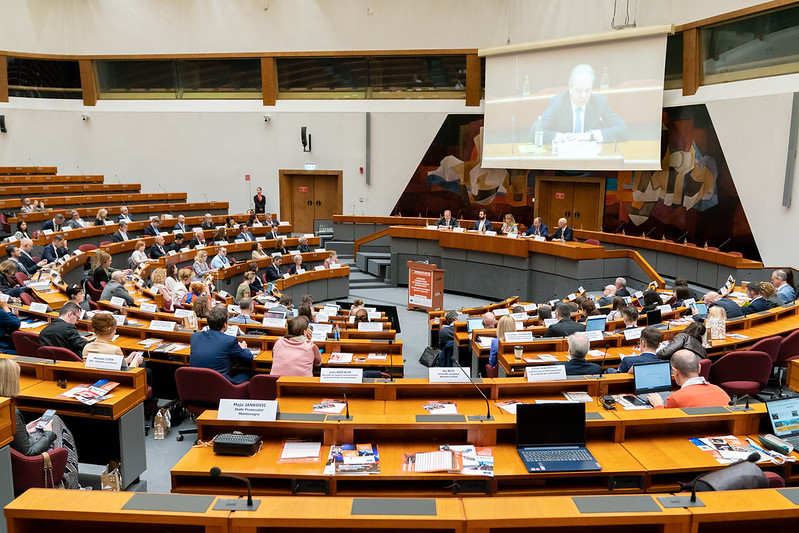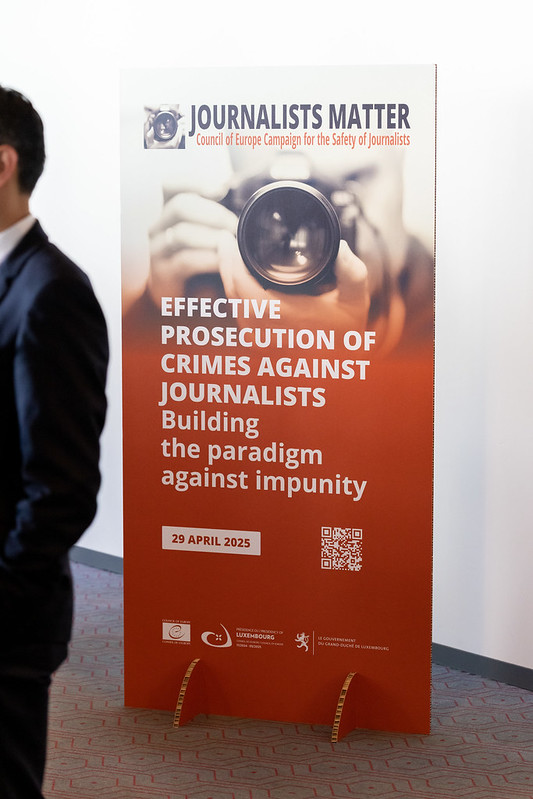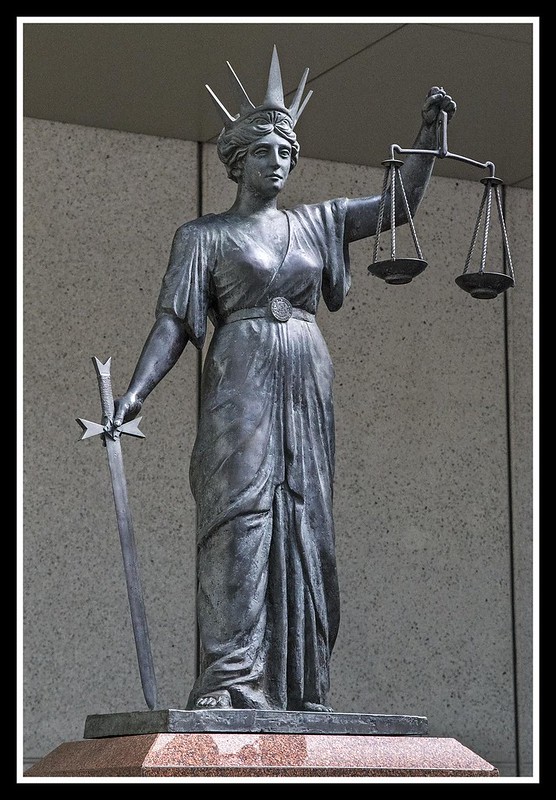From William Horsley, AEJ International Special Representative for Media Freedom and AEJ UK chair
2 May, 2025
One: Political will
On 9 April 2021 Greek investigative journalist Giorgios Karaivaz was gunned down outside his home in broad daylight by two men on a scooter. Police said the professional style of the assassination pointed to the involvement of organised crime. Two years later two suspects were arrested and charged with the murder, but they were acquitted in the following year. Today Karaivaz’s murder is still one of 42 documented journalists’ killings in Europe listed on the Council of Europe’s Platform for the Safety of Journalists as “impunity cases” because those responsible for all those murders have yet to be brought to justice.
As the world marks World Press Freedom Day journalists in Europe are at high risk of violent attacks or even murder, and impunity fuels further acts of violence.
A clue to what might lie behind the failure of justice in such a high-profile case is addressed in the 2025 Europe Press Freedom Report published by the 15 press freedom organisations that together monitor attacks of all kinds on the online Platform. A few days before the acquittals in the Karaivaz trial the prosecution revealed that a CD with data from the journalist’s phone had been damaged. The CD, reportedly containing the contacts of a former head of intelligence and other high ranking officials, so critical evidence was lost. Those officials, it emerged, had resigned following revelations about a wiretapping scandal, raising more questions about the authorities’ handling of the murder investigation.
The first “face of impunity” in cases of journalists’ killings is official incompetence, or obstruction of investigations – or both. This week Matjaž Gruden, Director of Democratic Participation at the Council of Europe, spoke publicly about why the vast majority of investigations into the murders of media workers – in Europe as elsewhere – end in failure to identify and punish the perpetrators. Those who want to attack or kill journalists operate, Gruden said, on a cynical business model which holds that journalists can be killed “without punishment”. Too often, he says, the lack of political will is what stands in the way of states meeting their legal obligations under the European Convention on Human Rights.
Some years earlier two mafia-style journalists’ killings in Europe — those of Maltese journalist Daphne Caruana Galizia in Malta in 2017 and Ján Kuciak in Slovakia – already provided proof that a pattern of targeted assassinations masterminded by powerful figures to silence critics was spreading westwards from Russia, Ukraine and Turkey into member countries of the European Union. Since then, despite public outrage, new evidence-gathering projects, and major international initiatives by the Council of Europe and the United Nations to end impunity, UNESCO reports that the global impunity rate in cases of journalists’ murders remains stubbornly high at 85 per cent.
Two: A “culture of impunity”
In addition to fears about the integrity of European justice systems, the Council of Europe’s inquiry points to a wider societal “culture” or “climate” of impunity which has been turbo-charged by the unconstrained power of the tech platforms and the lack of effective safeguards in the online world.
Rebecca Whittington, the Online Safety Editor at Reach plc, a major UK news publisher, says that in the company’s recent survey of 400 women journalists 75 percent had experienced actual harm or threats, including being targeted with sexually explicit and violent messages, in the past three years. A fifth said they had considered quitting journalism. “The flames are fanned by big tech”, Whittington says, “and exacerbated by public anti-media sentiment.” Too often the police fail to take those things seriously or say they lack the power or resources to bring Facebook and other platforms to book.
Either way, journalists are targeted for their work and denied the protection they need. The effect is to deter the already dwindling number of journalists covering local council chambers and courts in the UK from providing that vital service for their communities.
Julie Posetti of the International Centre for Journalists, a close watcher of the digital transformation, says the global giant Meta’s decision to abandon fact-checking has brought a surge in online disinformation, and fact-checkers themselves are now targeted. The tech oligarchs, she says, have put profits ahead of users’ safety and in the USA “free speech absolutism” now looks like the winner. New EU legislation, including the European Media Freedom Act and the Digital Services Act, is designed to counter a range of threats from online harassment and covert surveillance to media capture by the rich and powerful. How effective those legal and regulatory defences will be against the rival information regimes in authoritarian states and the America of Elon Musk and Mark Zuckerberg will be tested soon.
Three: A standing mechanism to end impunity?
In 2018 the premeditated murder in Saudi Arabia’s Istanbul consulate of the world-famous journalist Jamal Khashoggi was an object lesson about the need for states to be held accountable for egregious crimes. Instead, as Caoilfhionn Gallager KC points out, there was total impunity for that murder. Despite a public clamour for meaningful international sanctions to be applied, “business as usual” was soon restored in relations between Saudi Arabia and the West.
The UN Special Rapporteur on extrajudicial, summary or arbitrary executions, Dr Agnes Callamard, undertook an ad hoc inquiry into the killings of Jamal Khashoggi herself. Her report denounced the lack of transparency of the Saudi investigation and found that Khashoggi’s murder was the result of an extrajudicial killing committed in a consulate office on foreign territory.
But why, Caoilfhionn Gallagher asks, did the United Nations’ formal machinery not have “bite?” She answered the question herself: “Because member states did not want it.” Other leading experts in international human rights law have also called for the creation of a standing UN or other international mechanism with powers to investigate promptly and bring international law to bear when journalists or human rights defenders are attacked or killed without an effective judicial investigation. That, it is suggested, may be the only way to end the scourge of impunity.
Meanwhile, the Council of Europe’s 2016 guidelines on the protection of journalism and the safety of journalists are an authoritative manual of the standards and protocols state authorities must observe to conduct prompt, impartial and effective investigations into killings and other serious crimes against journalists. They include investigating whether there is a connection between threats or violence against media actors and the exercise of their journalistic activities, aggravated penalties for public officials who obstruct an investigation, and specialised units and training for the investigators.
Currently the Platform for the Safety of Journalists documents 42 cases of impunity involving journalists’ killings or disappearances in Azerbaijan, Belarus, Cyprus, Greece, Kosovo, Malta, Montenegro, Poland, Russia, Serbia, Slovakia, Turkey, Ukraine, and the UK. It’s never too late to achieve justice for the victims of murder and their surviving families.
On 29 April the Council of Europe hosted a multi-stakeholder Thematic Conference in Luxembourg Building the Paradigm against Impunity of Crimes Against Journalists in the context of the Council’s 5-year #Journalists Matter campaign










